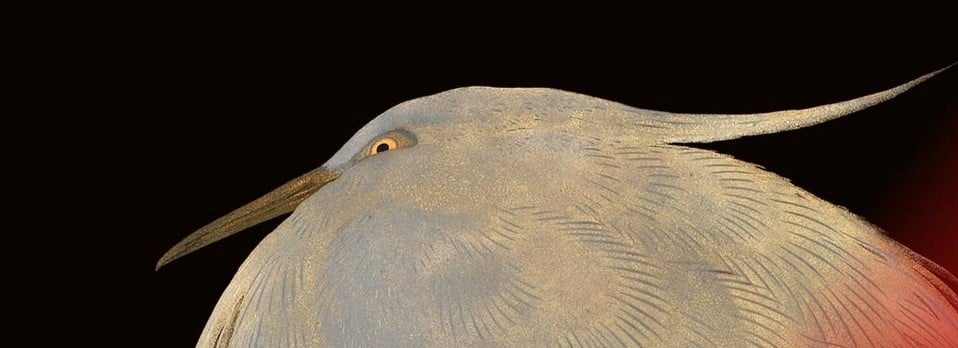
The oarsman
1925-29gelatin silver print | RCIN 2862277
The photographs in this album were taken by Okamoto Tōyō, a key, yet largely overlooked, figure in the evolution of Japanese photography during the interwar period. Born in the Nakagyō-ku ward of Kyoto, Okamoto Sadatarō, as he was originally named, was the second son of a prosperous textile artisan. As his eldest brother was destined to inherit the family business, Okamoto assisted with day-to-day operations while dabbling in painting and drawing. However, in 1916, when he was 26, both his brother and father died and the business passed to him. The following year he took up photography as a hobby, and about ten years later he closed the family firm to establish a professional photography studio under his pseudonym Tōyō.
Okamoto’s Spring Beauty of Kyoto is a fine example of the photographer's fascination with his home town. The album presents views of the former imperial capital during the cherry-blossom season. As the pages unfold, like panels of a Japanese screen, the viewer is taken on a meandering visual excursion through the blooming gardens of the city, including those at Kiyomizu-dera, Ninna-ji and Byōdō-in. Okamoto’s images are pastoral scenes offering an escape from the urban transformation of Kyoto, and yet his straightforward technique is undeniably modern. Without departing from the fundamentally romantic contemplation of nature, Okamoto achieves a balance between pictorialism and modernism, the lyrical and the dynamic. His photographs are simultaneously straightforward records and visual poems that remain startling to this day.
Aside from a limited number of luxurious albums, Okamoto made his work available through a number of beautiful but less expensive photobooks that combined text with mechanically-reproduced illustrations. In 1930, a year after Spring Beauty of Kyoto was presented to the Duke of Gloucester, Okamoto produced his first such book. The six-volume publication, The Photographic Illustrated Reference of Birds and Flowers, presented his images alongside essays by authors such as the pioneer botanist Makino Tomitaro (1862–1957). At least seven of the photographs included in the album were reproduced in this publication.
Text adapted from Japan: Courts and Culture (2020)







